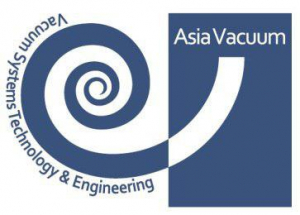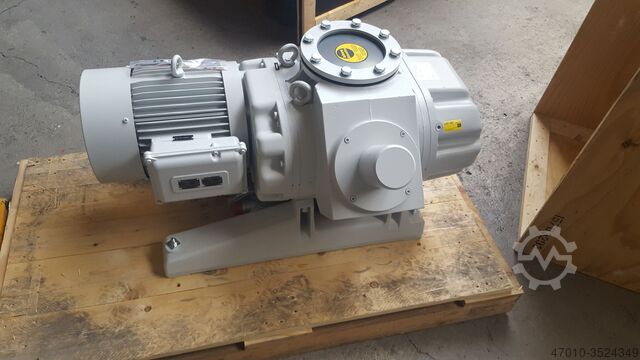OIL-SEALED PUMPS AND BACKSTREAMING
OIL-SEALED PUMPS AND BACKSTREAMING
The vacuum industry has recently seen a major shift from oil-sealed mechanical pumps for roughing and backing applications to oil-free pumps of various types. Oil-free pumping continues to penetrate more and more applications and industries. Why the shift? Well, oil-sealed pumps contain oil and that oil can contaminate a process or product. It’s that simple, but at some point, it becomes necessary to evaluate the necessity of making the oil vs. oil-free decision. The applications of roughing pumps are so wide-ranging and diverse that it’s virtually impossible to make any categorical judgments. Each application, then, requires that a specific analysis and judgment be made, and these require an understanding of the sources of possible pump oil contamination along with the mechanism of oil transfer from a pump to a process.
First, though, there are a number of ancillary considerations that might have an impact on an oil-free vs. oil-sealed decision. Oil-sealed pumps are extremely reliable. They have been built and improved for decades, and they require little periodic maintenance except for oil changes. Kits are available to rebuild pumps that have become damaged or to replace worn parts. The flip side is that used oil is regarded in most areas as toxic waste, which makes it difficult and expensive to get rid of. It’s also messy and potentially dangerous, as anyone who’s slipped on spilled oil can attest. Barring these considerations, it’s the possibility of contamination that’s the most common decision driver.
VAPOR-STATE TRANSFER
In applications where the oil-sealed roughing pump is plumbed directly to the chamber, direct vapor-state transfer from the pump to the chamber is the major source of oil contamination. If in doubt as to whether oil vapor contamination is occurring in a given system, place a drop of water on an inner surface of the chamber to see if it wets or beads. This is a very sensitive test, since the condensed oil will spread in a film a monolayer thick over the entire inner surface.
This means that liquid oil will cover all surfaces and not be localized to a particular area, say near the roughing line. When a pump operates continually, the oil within the pump will become hotter and hotter, due to simple mechanical energy heat transfer, until some maximumtemperature is achieved. The increase in oil temperature will result in an increase in oil vapor pressure since the vapor pressure is a function of temperature.
During the first part of a pumpdown cycle where viscous flow conditions obtain, little oil vapor transfer will occur due to the continual impacts of oil vapor molecules with air molecules. Backstreaming oil vapor molecules will lose their energy upon impact and be swept back into the pump through entrapment.
Once the pressure falls into the molecular flow regime, however, these impacts cease and oil vapor transfer begins to occur at a rate governed by the vapor pressure of the oil at whatever temperature the oil has reached. The effective vapor pressure of the oil is usually a function of its quality. Undistilled or poorly distilled oil will contain light fractions (low boiling point components) which will volatilize at low temperatures.
A simple practical test is to sniff the inlet of a hot pump. If a fishy odor is detected, the oil is undistilled or of poor quality. High quality, vacuum-distilled oil will be either odor-free or close to it. Obviously, using a high quality oil will provide lower backstreaming rates. Check the manufacturer’s vapor pressure specs at elevated temperature, not at room temperature. Some hydrocarbon, high lubricity, diffusion pump oils make excellent mechanical pump fluids with low(er) backstreaming rates.
Additional problems in vapor-state transfer occur due to extremely high temperatures that arise in the oil film sealing the rotating vanes to the pump cavity. These high temperatures are caused by mechanical friction at these points, and they can be high enough to cause chemical breakdown of the oil to the point where light fractions, which backstream easily, are broken from the hydrocarbon chains.
The effects of temperature on the pump’s oil vapor and resultant backstreaming rate should be considered in light of the fact that the backstreaming occurs constantly as long as the pump is operating in the molecular flow regime. This really means that hydrocarbon contamination is being continuously fed into the chamber.
NON-VAPOR PRESSURE TRANSFER
Transfer of liquids from the pump’s inlet into the pumping line can occur due to several mechanisms. The simplest occurs whenever the pumping line stays under vacuum when the pump is shut off or as the result of apower failure. Pressure from gases trapped within the pump or even through the pump from atmosphere literally forces some of the pump oil into the pumping line. This effect is often called suckback. Many pumps have a built-in valve or metering system to reduce this effect, but it can still happen and once is enough. In practice, an automatic vent valve should be included in the pumping line to vent the inlet line when the pump shuts off.
Additional liquid/vapor backstreaming occurs due to droplets of hot oil that can be physically flung from the pump’s inlet during operation due to mechanical breakdown of the oil films sealing the vane/body interface.
A slightly similar effect occurs when microbubbles of oil break on the surface. This is most often caused by either the expansion of trapped light gases such as helium or from the almost explosive expansion of condensed gases, such as liquid water which can be converted into steam. When the bubble expands and breaks, the surface tension is such that the bubble explosively breaks down and imparts sufficient energy to the oil to allow it to leave the pump either as liquid or vapor.
An important transfer mechanism is surface creep. Oil, released into the pumping line will tend to spread along any surface and finally migrate into the process chamber. Although the migration rate is low, it is a continuous effect and will finally reach the chamber. When the pumping line is at viscous flow pressures, little or no surface creep will occur due to continual impacts with the gases being pumped from the chamber. At lower, molecular flow pressures, the possible impacts with surface oil are too few to stop its motion along the pumping line toward or into the chamber.
VACUUM PUMP TRAPS
There are a number of backstreaming traps commercially available. They are all effective to some extent, but they require careful handling and maintenance to ensure that, during cleaning or regeneration to remove trapped oil, that the oil is not allowed to escape into the upstream side of the trap. Many traps are regenerated by heating while being pumped on, and this procedure would easily allow the oil vapor to leave the trap from both the inlet and outlet ports.
Additionally, most traps have a room temperature surface path through them that allows surface creep to pass slowly through them. Although they can be effective, they can also lead to a fool’s paradise if it assumed that their installation will solve backstreaming problems.
PRACTICAL CONSIDERATIONS
Although oil vapor transfer through backstreaming is a potential problem for many processes, it is useful to examine the actual effects in light of the process to determine whether or not the potential problem can be dealt with or simply lived with. In many cases, it is possible to confine the use of a mechanical pump to viscous flow and then valve or shut it off when not in use to severely limit backstreaming. If the risk to the process is too great to take the chance, it is possible to switch to one of the many oil-free pumps now on the market and sidestep the problem entirely.



